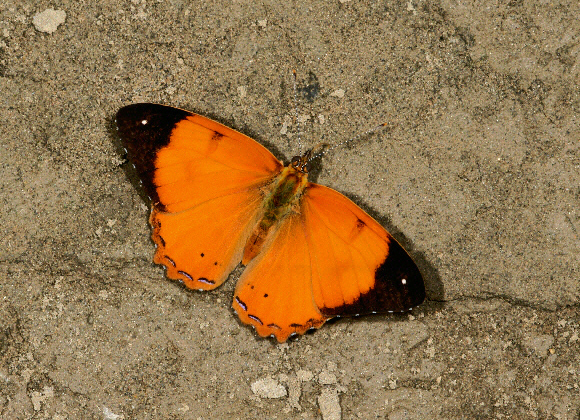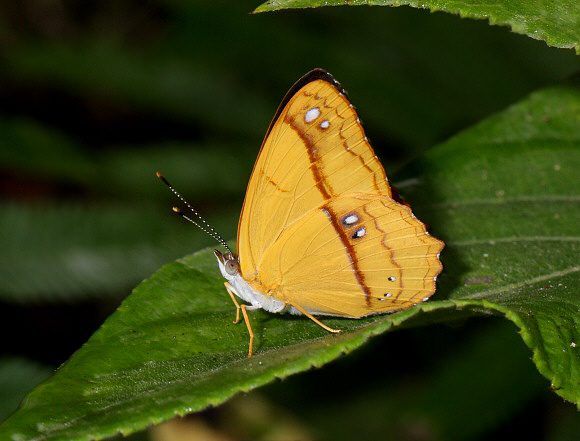 Nica flavilla, Rio Madre de Dios, Peru – Adrian Hoskins
Nica flavilla, Rio Madre de Dios, Peru – Adrian Hoskins
Introduction
This small and attractive species is the sole member of the genus Nica. Its closest relative is Peria lamis which has a similar underside but lacks the silvery ocelli. The 2 species are quite different on the upperside, which in lamis is dark brown.
Nica flavilla is distributed from Mexico to Bolivia.
Habitats
This species is found in rainforest and humid deciduous forest habitats at altitudes between 0-1500m but is more frequently seen at altitudes below 800m.
 Nica flavilla, Rio Shima, Satipo, Peru – Adrian Hoskins
Nica flavilla, Rio Shima, Satipo, Peru – Adrian Hoskins
Lifecycle
The eggs are white and shaped like a flattened cone. They are laid singly close to the midrib of old leaves of Cardiospermum, Serjania or Paullinia ( Sapindaceae ).
The fully grown larva is green with a brown lateral line edged with pink, and 3 brown transverse bands on the back. There is a pair of rosetted spines on each segment, with those on the thoracic segments being thicker and longer. The head is brown and bears a pair of orange head horns with whorls of brown spikes.
The chrysalis is green with a pale lateral stripe, and flecked with brown. It has a thoracic keel but is otherwise devoid of projections.
Adult behaviour
Males are usually encountered singly at forest edge habitats including along riverbanks, sunlit trails and roadsides. They visit damp ground to imbibe mineralised moisture, and usually hold their wings erect while feeding, but can occasionally be seen basking on sandbanks. They rest on the under surface of leaves at a height of about 1-3m.
I have not observed the females. DeVries states that they oviposit around midday and are most often encountered along trails and in large light gaps.
